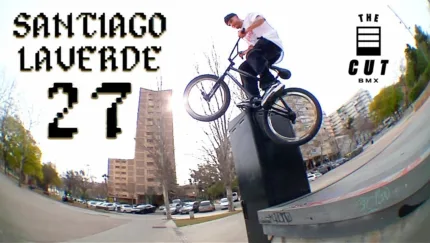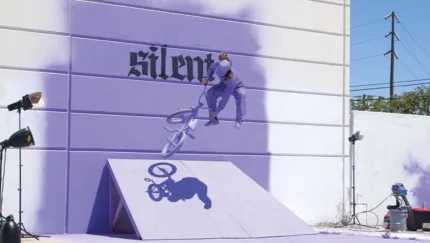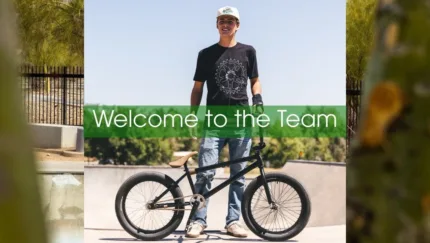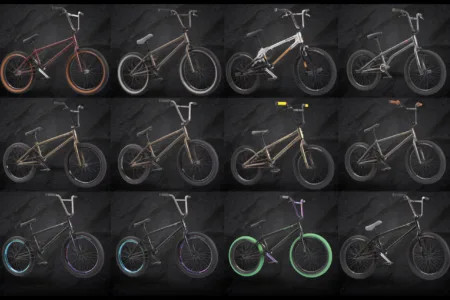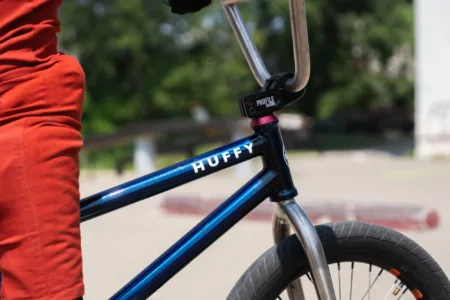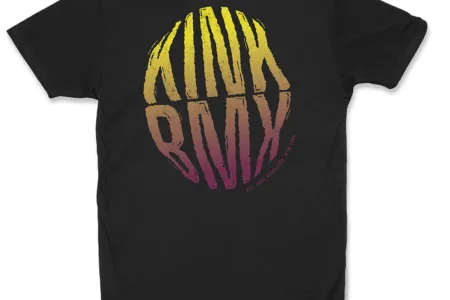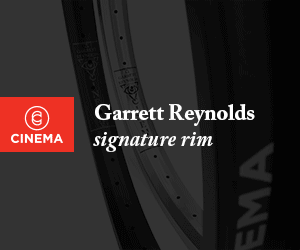
30 Years Of Hoffman Bikes - Pt 7: THE SUPER FORK
"Riders were beginning to have career-ending injuries because of broken forks."
20 Dec 2021

Words by Brian Tunney - An exclusive extract from the 30 YEARS OF HOFFMAN BIKES zine.
Images via hoffmanbikes.com
In the dark days of BMX, when a handful of disconnected manufacturers dictated BMX technology, riders rode threaded headsets, quilled stems and forks that broke every month. From bent dropouts to snapped steerer tubes to stems ripping off at the base, the plethora of ways in which a BMX bike’s front end could break was always an issue to deal with. Around 1991, brands such as S&M and Homeless began to offer a thicker fork dropout, and this was huge, but it didn’t really solve the problem of overall front end weakness.
Mat Hoffman could attest to this. And there’s a scene in “Head First” where Mat briefly begins to rummage through his broken bike part graveyard while accounting how the fork broke and what length of hospital stay it meant for him. When I was 17, I thought it was truly badass. But now I’m old and it kinda pisses me off that the top BMX rider in the world couldn’t find parts that he trusted with his life.
And Mat was sponsored by Haro, a top brand at the time. But the technology being pumped out was not up to par with the riding of the time. Something had to change, and fast. Riders were beginning to have career-ending injuries because of broken forks.
Enter the Super Fork.

In early 1993, after breaking and bending virtually every stem and fork on the market, Mat Hoffman, Chad Harrington and Kris Gack came up with a revolutionary design that changed how all forks and stems would be designed from that point forward. This new fork and stem designs focused in on the issues of bending steerer tubes and stems breaking. The fork design featured an I-beam inserted into the steerer tube for added strength. The steerer tube also extended about 2 1/4″ above the headset. The stems were machined from aluminum with allen bolts which tighten on to the reinforced steerer tube. The headset was still threaded, but this new design was a crucial step in the right direction for all of BMX riding, and soon after, or maybe alongside Hoffman, brands such as S&M and Standard were working on their own similar designs.
About a year later, BMX brands run by riders started experimenting with threadless headsets, and those first few years were very murky. The detanglers of the time had to evolve alongside a larger head tube diameter, and the standards for steerer tube diameter/internal stem diameter needed to go through some rigors, but ultimately, Hoffman Bikes helped to spearhead the modern day, threadless, 1 1/8” clamp on stem and fork combo.

1993 Superforks
I cannot stress enough how important this evolution in BMX technology was. After years of loose headsets, broken stems and cracked forks, BMX finally had a stronger solution that was easier to work on and much more dependable. The switch also symbolized a revolution in BMX brand thinking. BMX brands at large began tinkering in different technologies that had gone untouched for years previously.
Gone were the days of stripping out a hollowed out stem bolt, or re-tightening your headset every ten minutes with your hand, or laying unconscious in a hospital for a day because of a broken dropout. And you can see the shift in the riding of the time. 900s became more common, Mat started experimenting with Mega Ramp type quarters, and more people were able to walk away from sloppy backflip attempts relatively unscathed.
It’s a bird? It’s a plane? No, it’s Mat Hoffman not wanting to go back to the hospital because of broken bike parts. It’s the Super Fork! - Brian Tunney
Check out the latest incarnation of the Super Fork in the 30 year Anniversary line from Hoffman Bikes at hoffmanbikes.com and ask for Hoffman at our DIG PARTNER STORES worldwide.

The original one piece steerer tube is back!
• Colors: Black, CP
• Weight: with Cap: 31.8oz
• Material: 100% 4130 Chromoly
• Heat Treatment: 100%
• Steerer Tube: 1pc CNC Steerer Tube
• Legs: Tapered Fork Legs with Internal Butting
• Dropouts: 4mm Dropout
• Steerer Tube Length: 6.42″ | 163mm
• Dropout Offset: 1.1″ | 26mm
• Dropout Slot: 3/8″ | 10mm
• Bearing Race: Integrated Campy Spec
• Compression Bolt Thread: 25×1.5mm
• Compression Bolt Hex: Alloy 8mm Allen Key
• With or without 990 mounts
Previous
30 Years Of Hoffman Bikes - Pt 6: Seth Kimbrough
Seth had a blank canvas and no rules laid out in front of him.
Next
DIG BOOK #2021
Don't miss out on the biggest issue of DIG ever
Related Content













